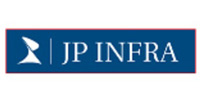Debt instruments provisional rating policies get reinforced by the SEBI new guidelines.
Sebi, the market regulator, issued a new structure on Tuesday to improve policies on a provisional assessment by credit rating agencies (CRAs) for debt instruments. According to the structure, all provisional ratings (‘long term’ or ‘short term’) for debt instruments must be prefixed with ‘provisional’ before the rating symbol in all communications—rating document, press release, and rating justification, as per a circular issued by Sebi.
Furthermore, a rating would be considered preliminary rather than definitive in situations where certain compliances critical to the assignment of credit ratings have yet to be met or certain documentations are yet to be completed at the time of rating.
These documents or compliances include the execution of a secured deed, the creation of an escrow account, and the formation of a debt service reserve account.
“In no case, shall a credit rating agency grants a rating, including a provisional rating, to an issuer or customer assessing strategic decisions, such as funding mix for a project, acquisition, debt restructuring, scenario-analysis in loan refinancing,” said Sebi.
Regarding the validity duration, Sebi stated that a provisional rating would be modified into a final rating within 90 days of the debt instrument’s issuance. The final rating given at the conclusion of the 90-day period would be consistent with the documents available.
It also stated that a 90-day extension could be issued on a particular circumstance basis by the CRA’s rating committee in compliance with the credit rating agency’s policy in this regard.
“After 180 days from the date of issuance, no CRA shall award any provisional rating to a debt instrument,” Sebi said.
In addition to the disclosures already made by CRAs, Sebi stated that disclosure of pending documents considered when assigning a ‘provisional’ rating must be included in the press release or rating justification.
Furthermore, risks associated with the credit rating’s provisional existence, including risk factors present in the absence of completed documents, must be reported.
Moreover, the rating that would have been issued in the absence of the pending documentation taken into account when assigning provisional rating should be disclosed.
In situations where the lack of such documents would not result in the CRA assigning any rating (for example, a provisional rating for a Real Estate Investment Trust (REIT) or Infrastructure Investment Trust (InvIT) awaiting trust formation), the CRA would need to clarify this in the press release.
When issuing a provisional rating to a proposed debt instrument, Sebi stated that the press release must state that if the debt instrument is subsequently released, the provisional rating must be modified into a final rating within the validity timeframe specified.
Moreover, in the case of provisional ratings, the press release must provide broad information regarding the securities proposed to be owned by the REIT/InvIT, as well as the proposed capital structure.
The rating reasoning should state that the CRA obtained an undertaking from the sponsor confirming that the main assumptions have been met (relating to the assets and capital structure, are in consonance with the details filed by the sponsor with Sebi).
In the event of a change in provisional rating due to a change in main assumptions, the press release must state that the CRA’s rating is dependent on the issuer’s statement that similar changes have been made in the filing with the regulator.
If the provisional rating assigned is not accepted by the issuer (or sponsor in the case of REITs/InvITs), Sebi stated that certain supplementary statements, including specifics of the steps taken for assigning the provisional ratings, must be made in the “non-accepted ratings” released by credit rating agencies on their website.




















































































